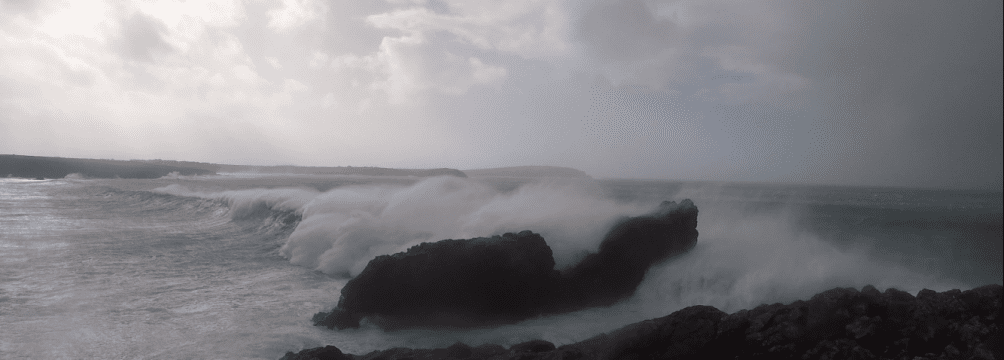
Now in the depths of winter and in the middle of a ten day storm we thought we would explain a little about what causes them , the impact they have on our coast and also the do’s and dont’s for storm watching !
Winter storms that hit the UK are events which are mainly caused by low atmospheric pressure in the Atlantic Ocean and are accompanied by severe weather, such as heavy rain (and the potential for flooding), lower temperatures and gale-force winds.
Gale-force winds (winds of more than 34 knots or 17.2 m per second) are most commonly caused by depressions travelling across the Atlantic Ocean. These depressions may pass close to or over land. Occasionally they can reach hurricane force when reaching land, for example the storm’s in October 1987.
If you coincide gale force wind’s with large swells ( 30ft high waves !) and spring tides then our coast line is in for a serious battering. The real damage is done to our coastline when all elements co inside with a spring tide.
Firstly a spring tide has nothing to do with the spring season, it is simply a reference to the tide springing in and out with speed. Spring tides happen twice a month just after full and new moons. This is when the moon is aligned with the sun and the earth, the combined gravitational pull of moon and the sun is stronger causing a higher tidal range with greater higher and lows – known as spring tides.
Therefore when you have a large spring tide, gale force winds and a large swell that’s when these impressive storms hit our coastline reminding us the true power of a storm and our oceans !
As amazing as these storms are to watch it is important to make sure you watch them without endangering your self or others!
“There are no shortage of great spots in Cornwall for storm watching – but some places put on a truly spectacular show. It is often hard to get a sense of scale, even where the waves are biggest. “
It is easy to lose footing on the cliff paths and even the strongest of us can get blown over. If you are walking, wear sturdy footwear and a waterproof coat. Don’t take any chances on our cliff paths. Expect big surges coming up and down the beaches especially on narrow coves where it is very easy to get caught out by one of these storm surges – do not take any risky and use common sense !
On that note were off to the Philippines for 3 weeks !


